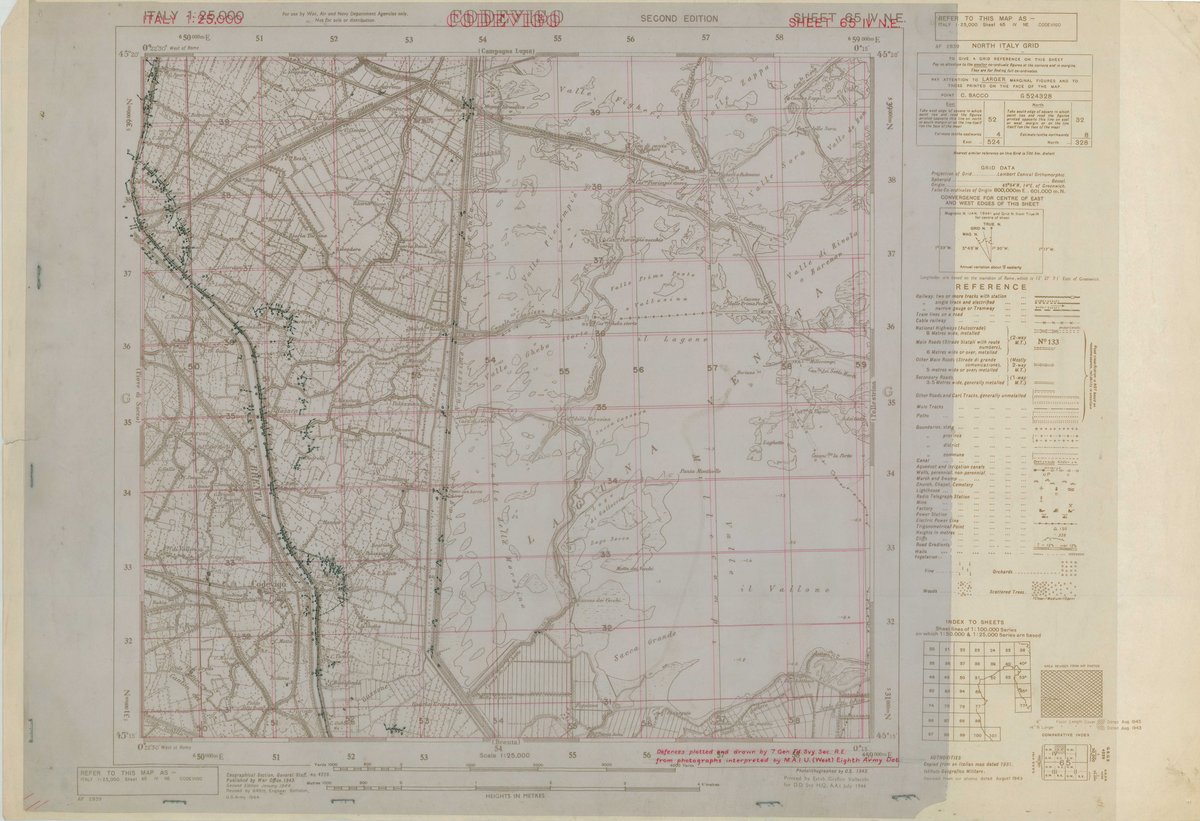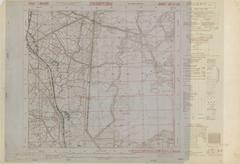
Codevigo Visiting Hours, Tickets, and Attractions Guide
Date: 14/06/2025
Introduction to Codevigo’s History and Visitor Experience
Situated in the heart of the Veneto region in northeastern Italy, Codevigo is a captivating town that blends a rich historical legacy with vibrant natural landscapes. Nestled between the Venetian Lagoon and the fertile Po Valley, Codevigo invites travelers to explore its Roman origins, medieval noble estates, and the ecological wonders of the Valle Millecampi wetlands. Whether you are a history enthusiast eager to admire ancient churches and Venetian villas, a nature lover drawn to birdwatching in the lagoons, or a traveler seeking authentic local festivals and cuisine, Codevigo offers an immersive and multifaceted experience.
Many of Codevigo’s outdoor sites and religious monuments offer free entry, with guided tours available in multiple languages focusing on the town’s Venetian heritage and lagoon ecosystems. The town is easily accessible via regional trains and buses from Padua and Venice, making it ideal for both day trips and extended stays. Seasonal events—such as the Honey Fair in Cambroso and agricultural festivals—add vibrant cultural color to any visit.
This guide provides detailed insights into Codevigo’s historical significance, practical visitor information (including ticketing and accessibility), top attractions, and local experiences to help you plan an unforgettable stay. For the latest news and updates, visit the Codevigo tourism website and consult Wikipedia Codevigo.
Table of Contents
- Quick Visitor Information
- Historical Overview of Codevigo
- Travel Tips for Visiting Codevigo
- Frequently Asked Questions (FAQ)
- Explore More: Nearby Attractions in Padua
- Geographical Setting of Codevigo
- Key Attractions and Visiting Information
- Accessibility and Transportation
- Visitor Tips and Practical Advice
- Family-Friendly Activities
- Gastronomy and Local Products
- Local Festivals and Special Events
- Visual Resources
- Summary and References
Quick Visitor Information
- Visiting Hours: Most museums and historic sites are open Tuesday–Sunday, 9:00 AM to 6:00 PM. Some sites are closed on Mondays and public holidays.
- Tickets: Entry to the parish church and many outdoor attractions is free. Guided tours and special exhibitions require tickets (€5–€15), available on-site or via the official tourism website.
- Accessibility: Main attractions like the parish church and Venetian villas are wheelchair accessible. Public transport links Codevigo to Padua and Venice.
- Guided Tours: Available in Italian and English. Advance booking is recommended, especially for popular tours and nature excursions.
- Special Events: Annual festivals such as the Honey Fair in Cambroso and cultural events at the Cornaro estate run from May through September.
Historical Overview of Codevigo
Roman Origins and Medieval Development
Codevigo’s history dates to Roman times, known as “Caput Vici” for its strategic position near the lagoon and Po Delta. The area is first mentioned in 988 CE as “Caput de Vicco,” highlighting early ecclesiastical ties through land donations to the Monastery of Santissima Trinità di Brondolo.
Venetian Nobility and Ecclesiastical Heritage
In the Middle Ages, the powerful Cornaro (Corner) family influenced Codevigo’s development, leaving behind landmarks such as the parish church façade (attributed to Falconetto) and the rustic Cornaro villa. Angelo Beolco, the playwright known as Il Ruzante, found inspiration here. The Foscari family continued this noble tradition. The parish church, dedicated to Saint Zacharias, dates to at least 1173, with its Renaissance structure built in the 16th century. Codevigo was historically governed by the Bishop of Padua, symbolized by the pastoral staff in the town’s coat of arms.
Defensive Structures and Rural Settlements
Fortifications by the Carraresi family in Castelcaro attest to Codevigo’s strategic value. Remnants include a Venetian villa and an 18th-century church. Hamlets like Cambroso (“village of honey”) and Santa Margherita, with its hydraulic complex and traditional Casone delle Sacche, enrich the local cultural landscape.
Environmental and Economic Transformation
Codevigo borders the UNESCO-listed Venetian Lagoon, including the Valle di Millecampi. Historically important for fishing, salt production, and land reclamation, the area is now a haven for eco-tourism, blending agriculture, aquaculture, and water management. Innovative hydraulic works, such as the fitodepurazione wetlands at Ca’ di Mezzo, highlight Codevigo’s environmental stewardship.
Modern Era and Community Life
Post-WWII developments and the formation of the Italian Republic have shaped Codevigo, now home to around 6,255 residents. Community spirit is celebrated through annual festivals, fairs, and sports associations. Dr. Fausto Pittarello, a local healthcare leader, was recently honored as “Codevighese of the Year.”
Travel Tips for Visiting Codevigo
- Best Time to Visit: Spring to early autumn (April–September) for pleasant weather and vibrant festivals.
- Getting There: Easily accessible by regional bus or train from Padua and Venice. Car rentals are available for regional exploration.
- Photography: Capture the parish church façade, Cornaro villa gardens, and lagoon panoramas at Valle di Millecampi.
- Local Cuisine: Sample honey from Cambroso, fresh lagoon seafood, and rice specialties.
Frequently Asked Questions (FAQ)
Q: Are guided tours available in English?
A: Yes, several guided tours are offered in English; advance booking is recommended.
Q: Is Codevigo suitable for wheelchair users?
A: Key sites are wheelchair accessible, but some rural paths may be uneven.
Q: Are there any entrance fees?
A: Most outdoor and religious sites are free; some exhibitions and tours require tickets.
Q: What are the visiting hours for major attractions?
A: Typically 9:00 AM to 6:00 PM, Tuesday through Sunday.
Q: Where can I find official information and tickets?
A: Visit the official Codevigo tourism website.
Explore More: Nearby Attractions in Padua
- Historic sites in Padua city center
- Venetian Lagoon boat tours
- Regional wine and food tours
Geographical Setting of Codevigo
Location and Landscape
Codevigo is located about 30 km south of Padua and 35 km west of Venice, within the fertile Po Valley and close to the Venetian Lagoon’s Sacca di Bosco and Sacca di Scardovari inlets (Mapcarta). The municipality covers 69 square kilometers of flat, low-lying land, ideal for agriculture and aquaculture.
Natural Features
The region is characterized by wetlands, reclaimed fields, and a network of canals. The Sacca di Bosco and Sacca di Scardovari lagoons are protected habitats under the EU’s Natura 2000 network, offering exceptional opportunities for birdwatching and wildlife observation.
Climate
Codevigo enjoys a humid subtropical climate (Köppen Cfa), with warm, humid summers (28–30°C) and mild winters (0–2°C). Annual rainfall averages 800–900 mm, mostly in spring and autumn.
Key Attractions and Visiting Information
Natural Reserves and Outdoor Activities
- Sacca di Bosco and Sacca di Scardovari: Open year-round, offering walking trails, birdwatching platforms, and boat tours. Entry is free; fees apply for guided tours and rentals.
- Po Delta Regional Park: Located south of Codevigo, this park features cycling paths, wildlife observation, and educational centers.
Historical and Cultural Sites
- Parish Church of San Biagio: Open Monday–Saturday, 9:00 AM–12:00 PM and 3:00 PM–6:00 PM. Free entry; guided tours by request.
- Rural Heritage: Explore farmhouses, drainage pumps, and canals linked to historic land reclamation. Some sites operate as museums or educational centers.
Local Events and Guided Tours
- Honey Fair in Cambroso: Annual celebration of local honey and beekeeping.
- ALL’AIA APERTA: Farm visits and family workshops at “Fattoria del Campo dei Girasoli”—booking via Eventbrite.
- Antique Markets: Held regularly in nearby towns.
Accessibility and Transportation
- By Road: Easily reached via Strada Statale 309 Romea.
- By Public Transport: Regional buses connect Codevigo to Padua, Piove di Sacco, and Chioggia. Nearby rail stations: Piove di Sacco and Padua.
- Cycling: The flat landscape is ideal for biking; rental points are available in town.
Visitor Tips and Practical Advice
- Best Time to Visit: April–June and September–October for mild weather and wildlife activity.
- What to Bring: Binoculars, sturdy shoes, insect repellent, and weather-appropriate clothing.
- Language: Italian is official; a translation app or basic phrases are helpful.
- Tickets and Hours: Always check opening times and ticket policies for museums and events in advance.
Family-Friendly Activities
- Educational Farms: Interactive tours and workshops on sustainable agriculture. Booking advised.
- Outdoor Recreation: Cycling, running, kayaking, and canoeing in scenic surroundings.
Gastronomy and Local Products
- Traditional Cuisine: Try dishes featuring lagoon herbs, grilled eel, rice, and cheeses at local trattorias and agriturismi.
- Wine and Olive Oil: Sample Prosecco, Soave, and regional olive oils.
Local Festivals and Special Events
- Patron Saint Celebrations: Annual events with processions, open-air masses, music, and local food.
- Sagre and Food Festivals: Seasonal celebrations of local produce such as risotto, polenta, and lagoon seafood.
Visual Resources
- Interactive maps and high-quality photos are available on the official Veneto and Codevigo tourism websites.
- For an enhanced experience, download the Audiala app for guided audio tours and event updates.
Summary
Codevigo is a multifaceted destination where history, culture, and nature converge. From Roman roots and Venetian villas to the tranquil beauty of Valle Millecampi, the town offers memorable experiences for every traveler. Convenient transport links, accessible sites, and a blend of free and ticketed attractions allow for a tailored visit. The surrounding region presents excellent opportunities for day trips to places like Castello del Catajo and Padua’s historic center.
For the best experience, visit in spring or early autumn, and use official resources such as the Codevigo tourism site and the Audiala app for audio-guided tours. Embrace Codevigo’s cultural heritage, natural wonders, and community warmth for an authentic Italian adventure. (Mapcarta Codevigo) (Eventbrite Codevigo attractions)
